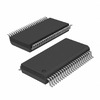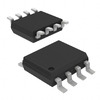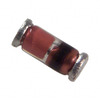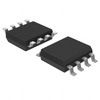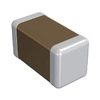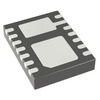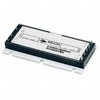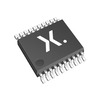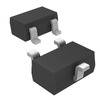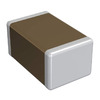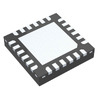LM334Z: Features, Pinout, and Datasheet
The LM334Z is a simple and efficient 3-terminal adjustable current source designed for precise current regulation in various electronic applications. Its adjustable output, temperature stability, and ease of integration. This article explores its features, applications, and practical implementation to maximize its potential in your designs.Catalog

What is the LM334Z?
The LM334Z stands out in electronic components, recognized for its function as a 3-terminal adjustable current source. This device excels in managing current control across a broad dynamic range, covering voltages from 1V to 10V and operational currents that span from 1µA to 10mA. It achieves precision in current regulation, boasting an impressive accuracy of ±3% at its initial setting, enhancing its role within various applications where consistent performance is desired. You can connect an external resistor, which empowers them to fine-tune the output current, thus effectively minimizing the disturbances caused by temperature variations to an insignificant 0.33%/°C.
To bolster stability against temperature fluctuations, incorporate a diode alongside an additional resistor. This method is frequently employed in design strategies aimed at maintaining reliability, even under variable thermal conditions. The LM334Z’s resilience allows it to perform admirably in both DC and AC applications, providing an impressive ability to withstand reverse voltages of up to 20V while keeping reverse current draw minimal. This flexible design not only showcases the component's durability but also opens possibilities for diverse applications, reflecting its wide-ranging utility.
LM334Z Pin Configuration

|
Pin No |
Pin Name |
Descrption |
|
1 |
V+ |
Positive Voltage Input |
|
2 |
ADJ |
Adjustment Pin |
|
3 |
V- |
Ground or Negative Voltage |
LM334Z Symbol, Footprint, and CAD Model



Circuit Schematics Using LM334Z

Features of the LM334Z
Wide Voltage Range (1V–40V)
• Operates across a broad voltage spectrum, enhancing versatility in various applications.
• Precise current regulation of 0.02%/V ensures stability despite voltage fluctuations.
Customizable Output Current (1µA–10mA)
• Offers flexibility to meet diverse device requirements, including sensor biasing and reference current sourcing.
• Maintains accuracy and reliability in applications needing precise current control.
High Accuracy and Versatility
• Delivers dependable performance across consumer, industrial, and complex systems.
• Improves electronic system efficiency with precise operation.
Ease of Design Integration
• Adaptable features simplify integration into different designs, minimizing errors and maximizing performance.
• Combines precision and flexibility to meet the needs of modern electronics.
LM334Z Technical Specifications
|
Type |
Parameter |
|
Mount |
Through Hole |
|
Package / Case |
TO-226-3, TO-92-3 (TO-226AA) |
|
Operating Temperature |
0°C–70°C |
|
Part Status |
Obsolete |
|
Base Part Number |
LM334 |
|
Number of Outputs |
1 |
|
Body Breadth |
4 mm |
|
Termination Type |
SOLDER |
|
Output Current |
10µA |
|
Forward Voltage |
40V |
|
Housing |
PLASTIC |
|
REACH SVHC |
No SVHC |
|
Mounting Type |
Through Hole |
|
Number of Pins |
3 |
|
Packaging |
Bulk |
|
Moisture Sensitivity Level (MSL) |
1 (Unlimited) |
|
Function |
Current Source |
|
Body Length or Diameter |
5 mm |
|
Supply Voltage-Min (Vsup) |
1V |
|
Nominal Supply Current |
10mA |
|
Accuracy |
±3% |
|
Sensors/Transducers Type |
TEMPERATURE SENSOR, ANALOG, RESISTANCE BASED |
|
Body Height |
5 mm |
|
RoHS Status |
ROHS3 Compliant |
Applications of the LM334Z
Bias Network Setups
A notable role for the LM334Z is in bias network configurations, which are instrumental in stabilizing amplifier circuits by offering a dependable current reference. For instance, this capability allows audio amplifiers and radio frequency circuits to retain clarity and reliability across different settings, addressing a common challenge in high-precision electronic designs.
Surge Protection Solutions
The LM334Z also finds application in surge protection mechanisms where its accuracy and dependability are needed. By regulating current fluctuations, it acts as a protector for delicate components against potential harm from unexpected surges. This application is use in industrial electronics, where the durability and longevity of equipment are of utmost importance.
Low-Powered Reference Circuits
The LM334Z is frequently utilized to create stable voltage references. Its low power consumption quality makes it ideal for battery-operated devices. Its reliable performance guarantees accurate voltage outputs, benefiting devices that range from portable medical instruments to advanced communication devices.
Ramp Generation
The LM334Z's ability to support ramp generation represents another application. This functionality is good for creating timing sequences in both digital and analog circuits. The device’s precision in managing current flow to produce predictable and stable ramps for timing and synchronization in a variety of technologies. Its usage is pronounced in automation systems and signal processing applications.
LED Driving
Extensive use of the LM334Z is observed in LED driving applications, where it plays a role in regulating current to ensure even brightness and optimal performance of LED arrays. This application is becoming increasingly important as LEDs emerge as the preferred lighting solution in various industries, known for their energy-efficiency and longevity.
Temperature Sensing Applications
Lastly, the LM334Z is effective in temperature sensing applications. Its inherent characteristics allow for accurate responses to shifts in temperature, proving in environments that require constant monitoring and control. Whether in industrial settings or electronic devices, its implementation in temperature sensing solutions fosters safer operations and boosts efficiency.
Package for LM334Z
The LM334Z comes in two package styles: TO-226-3 and TO-92-3. These packages are crafted to simplify integration into diverse electronic applications, offering flexibility in both design aesthetics and spatial considerations.
Physical Dimensions of LM334Z

LM334Z Manufacturer Information
STMicroelectronics establishes itself as an influential force in the semiconductor arena, gaining worldwide acclaim for its diverse range of solutions designed for microelectronics applications. Their competence in silicon technology pairs seamlessly with impressive manufacturing capabilities, allowing them to adeptly maneuver the swiftly changing technological environment. By forging strategic partnerships and collaborations, they have uniquely contributed to the progression of System-on-Chip (SoC) technology, invigorating innovation across various application areas. By harmonizing these technological and strategic strengths, STMicroelectronics continually influences the future of the semiconductor industry, serving as a great partner in the global journey towards technological progression. This sophisticated strategy not only bolsters their market leadership but also demonstrates how an intricate grasp of technological innovation and market tendencies can guide a company towards enduring achievement.
Datasheet PDF
LM334Z Datasheets:
About us
ALLELCO LIMITED
Read more
Quick inquiry
Please send an inquiry, we will respond immediately.
Frequently Asked Questions [FAQ]
1. How to configure the LM334 as a temperature sensor?
To set up the LM334 as a temperature sensor, connect a resistor between the R and -VIN terminals. Carefully selecting a resistance value in the range of a few hundred ohms is suggested to optimize sensitivity and performance, especially when a DC voltage is employed. This setup enables time tracking of temperature changes through modifications in resistance, which underlines the importance of meticulous calibration.
2. Which IC can convert resistance values to digital for microcontroller inputs?
A practical method for transforming resistance values into a digital format suitable for microcontroller inputs involves utilizing a constant current source like the LM334. This component generates a stable current through the resistive load, allowing for the measurement of the voltage drop across the resistor, which can then be fed into an Analog-to-Digital Converter (ADC) for subsequent processing by a microcontroller. In situations where signal strength is low, employing operational amplifiers to boost weak voltages can improve signal integrity before reaching the microcontroller. This combination of voltage measurement and signal amplification underlines strategic design choices that can result in more resilient electronic systems.
3. Is the LM334Z suitable for a 0.6mA or 0.8mA constant current supply in a 5V system?
The LM334Z is not well-suited for operating at constant current levels of 0.6mA or 0.8mA, primarily because it requires a minimum operating current of 10mA. For scenarios that call for lower current outputs, alternatives such as the TL317CLP should be considered, as they better accommodate these specific requirements. This consideration serves as a gentle reminder to carefully assess component specifications relative to project needs. Being attentive to these particulars enhances not only the efficiency of circuit design but also contributes to the longevity and reliability of electronic systems.

Comprehensive Guide to MIC2775 Voltage Supervisor
on November 21th

LSM303DLHC Sensor: Pinout, Features, and Datasheet
on November 21th
Popular Posts
-

Understanding Power Supply Voltages in Electronics VCC, VDD, VEE, VSS, and GND
on June 13th 24159
-

USB-C Pinout and Features
on June 13th 21283
-

The Ultimate Guide to Wire Color Codes in Modern Electrical Systems
on January 1th 17462
-

TL494 Current-Mode PWM Controller IC
on January 1th 14730
-

Current Divider Circuits and Effective Use of the Divider Formula
on January 1th 13628
-

FET (Field Effect Transistor) Circuit Symbols
Field-Effect Transistors (FETs) are widely used in modern electronics and are found in everything from simple devices to complex digital systems. To work with these transistors effectively, it's helpful to understand the symbols that represent different types of FETs. These symbols do more than just show what the transistors look like—they also provide information about how each transistor works ...on January 1th 13418
-

Quality (Q) Factor: Equations and Applications
The quality factor, or 'Q', is important when checking how well inductors and resonators work in electronic systems that use radio frequencies (RF). 'Q' measures how well a circuit minimizes energy loss and impacts the range of frequencies the system can handle around its main frequency. In systems with inductors, capacitors, and tuned circuits, a higher 'Q' means the circuit focuses more on a spe...on January 1th 13389
-

Understanding and Building Op-Amp Based Peak Detectors
In the world of electronic circuit design, peak detectors are key tools for accurately analyzing and processing signal strengths. These circuits are designed to find and keep the highest signal amplitude, making sure the peak value is precisely captured and held as needed. Peak detectors are important in many fields, from improving audio quality in communication systems to aiding medical diagnoses...on June 13th 12493
-

LM741 Op-Amp: Features, Specifications, and Applications
The LM741 op-amp is a popular and flexible electronic component. This article goes over the pin layout, functions, specs, and different ways the LM741 can be used, while also comparing it to similar models like the LM358.Catalog1. What Is the LM741 Op-Amp?2. The LM741 Pin Configuration3. The LM741 Pin Functions4. Specifications of the LM7415. Features of LM7416. LM741 Circuit Applications7. LM741 ...on June 13th 12034
-

ST-LINK/V2: Pinout, Specifications, and Datasheet
This article takes you through the ST-LINK/V2, a well-regarded tool that amplifies connectivity and functionality. Key topics will cover its pinout configuration, delve into its 3D model, and spotlight specifications. Such understanding expands the horizons of STM microcontrollers in diverse applications. By grasping these interfaces and tools, you can transform embedded systems, opening doors to ...on January 1th 11577






